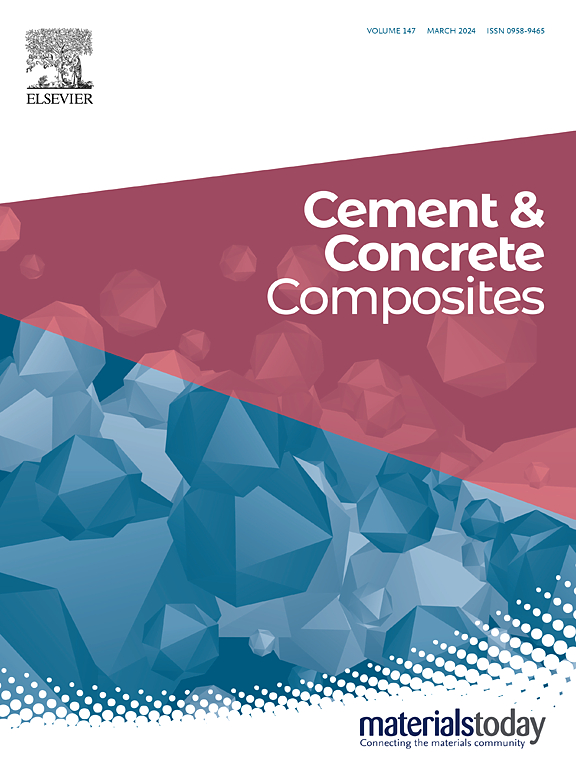聚氧聚乙烯-磷酸镁水泥复合材料作为高性能固态电解质
IF 13.1
1区 工程技术
Q1 CONSTRUCTION & BUILDING TECHNOLOGY
引用次数: 0
摘要
本研究将聚氧化物(PEO)掺入磷酸镁水泥(MPC)中,探索PEO-MPC复合体系作为结构超级电容器固态电解质的方法和可行性。综合分析了该复合材料的物理、力学和电化学性能,以及水化机理,以评估其储能应用的适用性。实验结果表明,PEO-MPC复合材料具有极高的离子电导率、显著的质量比电容和令人满意的力学性能,是一种有前景的固态电解质候选材料。首次开发了PEO-MPC复合固态电解质体系,实现了MPC复合材料离子电导率和抗压强度的同时增强。这些发现突出了PEO-MPC作为电解质材料的潜力。本文章由计算机程序翻译,如有差异,请以英文原文为准。
Polyethylene oxide-magnesium phosphate cement composite as a high-performance solid-state electrolyte
In this study, polyethylene oxide (PEO) was incorporated into magnesium phosphate cement (MPC) to explore the methodology and feasibility of utilizing the PEO-MPC composite system as a solid-state electrolyte in structural supercapacitors. The physical, mechanical, and electrochemical properties of the composite, along with its hydration mechanism, were comprehensively analyzed to evaluate its suitability for energy storage applications. The experimental results indicate that the PEO-MPC composite demonstrates exceptionally high ionic conductivity, remarkable mass ratio capacitance, and satisfactory mechanical properties, rendering it a promising candidate for solid-state electrolytes. We developed a PEO-MPC composite solid-state electrolyte system for the first time and achieved simultaneous enhancement of ionic conductivity and compressive strength of MPC composites. These findings highlight the potential of PEO-MPC for utilize as an electrolyte material.
求助全文
通过发布文献求助,成功后即可免费获取论文全文。
去求助
来源期刊

Cement & concrete composites
工程技术-材料科学:复合
CiteScore
18.70
自引率
11.40%
发文量
459
审稿时长
65 days
期刊介绍:
Cement & concrete composites focuses on advancements in cement-concrete composite technology and the production, use, and performance of cement-based construction materials. It covers a wide range of materials, including fiber-reinforced composites, polymer composites, ferrocement, and those incorporating special aggregates or waste materials. Major themes include microstructure, material properties, testing, durability, mechanics, modeling, design, fabrication, and practical applications. The journal welcomes papers on structural behavior, field studies, repair and maintenance, serviceability, and sustainability. It aims to enhance understanding, provide a platform for unconventional materials, promote low-cost energy-saving materials, and bridge the gap between materials science, engineering, and construction. Special issues on emerging topics are also published to encourage collaboration between materials scientists, engineers, designers, and fabricators.
 求助内容:
求助内容: 应助结果提醒方式:
应助结果提醒方式:


